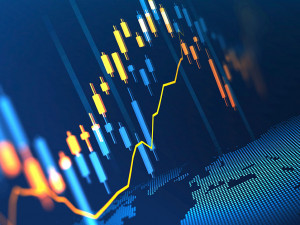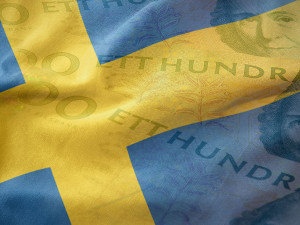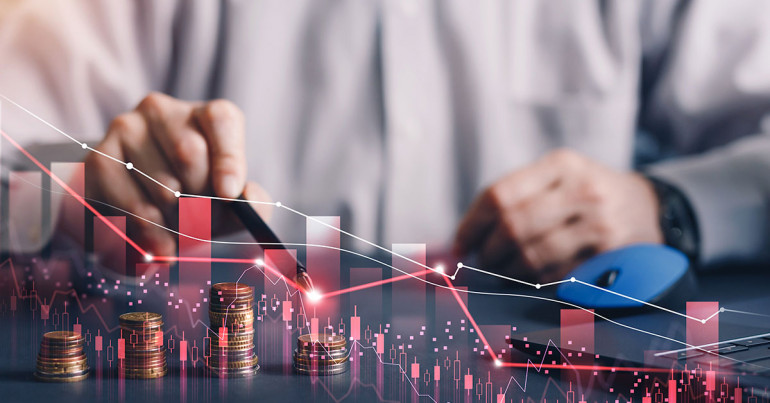
The biggest recession in history is up for debate and first, we need to determine what a recession is, what counts as a recession and then look at the economic impact of each. A recession may be severe, but the impact of the recession on the economy itself may vary.
In this article, we will be exploring the biggest recessions in history and how they work.
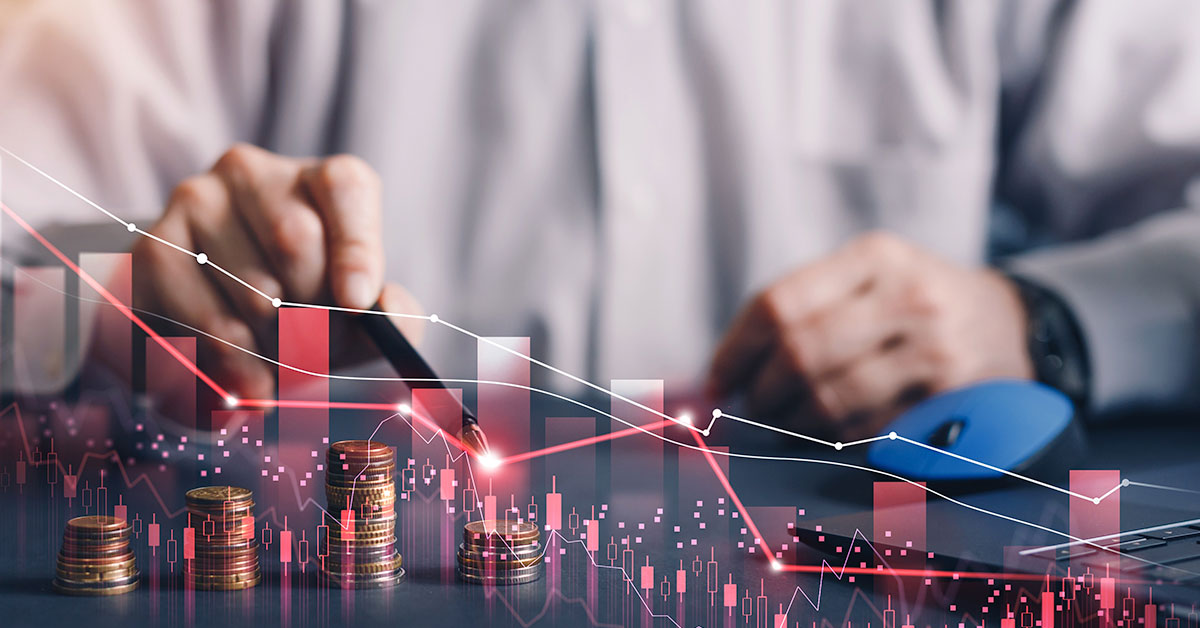
Defining a recession
Essentially, a major indicator of a recession is when there is a widespread, prolonged, and significant downturn in general economic activity. The major indicator of recession in the UK is when the GDP growth rates remain negative or they keep on declining even after two consecutive quarters.
Note, though, that economy experts, like those in NBER (National Bureau of Economic Research) also use more complex indicators and formulas in determining recessions. Aside from GDP, they also look into retail sales, industrial production, and non-farm payrolls, among others. To qualify for the declaration of recession, the downturn also has to be pervasive, lasting, and deep.
Several of these qualities are not evident during the initial signs of a downturn, though, which is why a lot of recessions are being declared and called retroactively. In general, these are the indicators that recession is already happening:
GDP (Gross Domestic Product)
Actual GDP represents the total amount or value that an economy generates through produced goods and services within the given timeframe and after making some adjustments for inflation. If there is a sharp and sudden drop in productivity, then it indicates a negative real GDP.
Manufacturing
Experts also study the manufacturing sector’s health as it is also a major indicator of how strong and self-sufficient an economy is. To measure this, the exports/imports in totality, as well as the trade surplus (trade deficits), will be considered.
Real income
A prolonged and sudden decline in real income may also indicate recession as it can lessen purchasing power. To calculate real income, it is necessary to measure personal income and then adjust it based on inflation. It is also crucial to discount social security measures, like welfare payments.
Employment
The rate of employment also indicates whether there is a recession. For instance, if the unemployment rate in a country is particularly high, and it has happened for a prolonged period already, then it is a confirmation of the economy’s pivot to the recession stage instead of a prediction of a future recession. In most cases, an unemployment rate close to 6% of the entire workforce may indicate a problem.
Retail/wholesale
Economic experts also measure retail and wholesale sales adjusted for inflation to determine the goods’ market performance.
Recessions naturally play a major role in the natural economic or business cycle of contraction and expansion. An economy may begin expanding at its weakest point (trough) and begin receding after getting to its highest point (peak).
In case of a deep and long-lasting depression, it will likely translate eventually into depression.
During the early parts of the 1900s, there was what we call the Great Depression, which lasted for many years. It even went through a decline in GDP that goes over 10%. The rate of unemployment peaked at 25%.
You can read our article on recessions for an analysis of how to navigate a recession.
Major Causes of Recession
Recession starts because of a wide range of reasons – among which are the following:
Excessive debt
When a person or company has excessive amounts of debt, the amount linked to servicing will increase significantly to the point that there will be a risk of inability to settle the bills. Increasing defaults in debt and bankruptcies will end up capsizing the company. This extends to the wider economy. A perfect example of too much debt resulting in a recession is the housing bubble that prompted the Great Recession. Another is the Greek financial crisis.
Sudden economic shock
This surprise problem may end up creating serious financial ruin. During the 70s, OPEC unceremoniously cut off the oil supply in the US, which caused not only recession but also never-ending lines at gasoline stations. Another example of economic shock that suddenly caused a shutdown in the global economy is the coronavirus outbreak.
Asset bubbles
In several instances, emotions drive investing decisions, resulting in bad economic results. This is especially true when the economy is strong, causing investors to have a more heightened level of optimism. This tendency, which is called ‘irrational exuberance’, may end up inflating the real estate or stock market bubbles. There will be a resulting recession once these bubbles pop leading to panic selling that ends up crashing the market.
Too much inflation/deflation
Excessive inflation can pose a danger to the economy. Note that central banks tend to regulate and control inflation by increasing rates of interest. The problem is this increase in interest rate will end up depressing economic activities and eventually, causing recession.
Excessive deflation tends to have worse results. This phenomenon happens when there are declining prices, resulting in contracting wages that depress prices even further. Once the deflationary feedback loop gets uncontrolled, you will notice businesses and people suddenly stopping their spending, putting a negative toll on the economy. This is currently the case for Venezuela’s economy.
Technological change
While new inventions heighten productivity and assist the economy, these technological breakthroughs may also cause short-term adjustments. For instance, during the Industrial Revolution, many professions became obsolete, causing difficult times and recessions. Presently, a lot of economists are worried about the existence of AI and robots, which may lead to recessions when they end up eliminating a wide range of job categories.
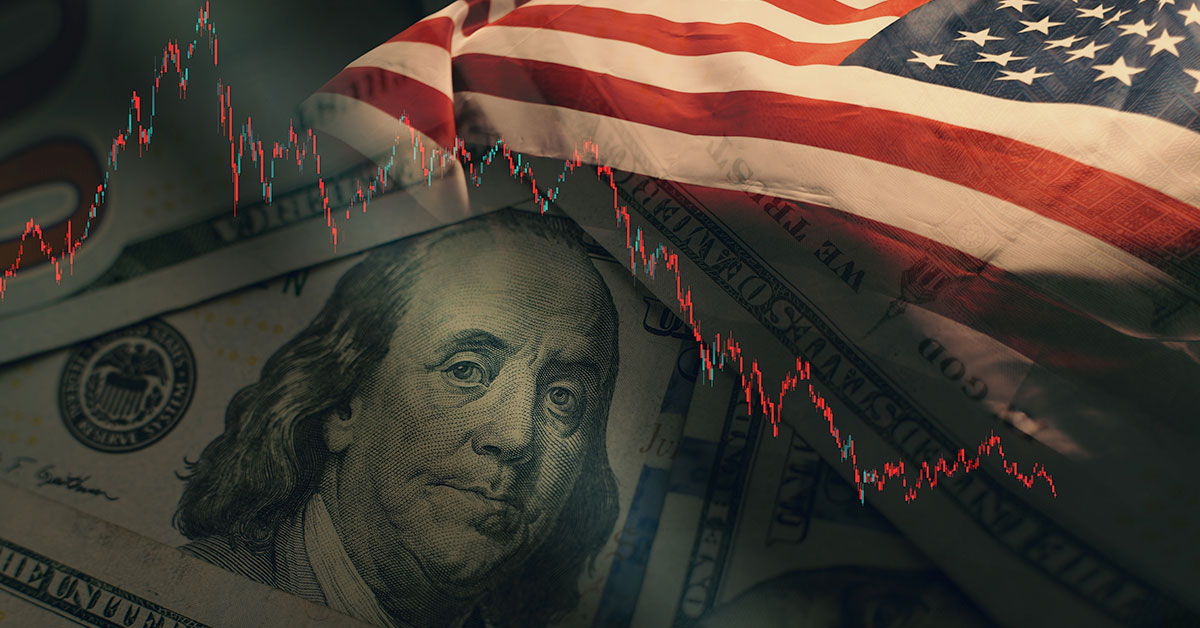
The Great Depression
The biggest recession in history, in terms of scale and size, is most likely The Great Depression, which happened from 1929 to 1933. Full economic recovery only happened during World War II, almost a decade later. During this time, the unemployment rate peaked at 25%.
Meanwhile, GDP went down to 30%. Many consider it the most unpredictable economic collapse that happened in modern US history.
This global economic downturn was the most severe and the longest depression that the industrialised Western world experienced. It sparked major changes in economic theory and institutions, as well as macroeconomic policy. Despite it starting in the US, it resulted in huge output declines, acute deflation, and severe unemployment in almost all countries worldwide.
The Great Depression also had staggering cultural and social effects, particularly in the US.
For instance, the Great Depression was specifically severe and long in Europe. Meanwhile, Japan and Latin America only experienced minor effects from this depression. Unsurprisingly, this depression resulted from a wide range of causes – among which are consumer demand declines, misguided government policies, and financial panics. All these factors caused the downfall of the economic output in the US.
On the other hand, the gold standard connecting almost all countries worldwide in a network that has fixed currency exchange rates contributed to the transmission of the American downturn, thereby affecting other countries. Recovery was attained largely after abandoning the gold standard, resulting in monetary expansion.
The Great Depression actually made an enormous economic impact worldwide. These include profound and major changes in various economic policies as well as intense human suffering.
The 2008 Financial Crisis
Another recession which is a contender for the biggest recession in history was the 2007-2008 financial crisis. Around the summer of 2007, global financial markets started to indicate signs that there would be an upcoming overdue reckoning for a binge of cheap credit that lasted for years.
Among these signs include the collapsing of a couple of Bear Stearns hedge funds, the warning of BNP Paribas to its investors of the possibility that they may be unable to withdraw from their funds, and the plan of the British Bank in Northern Rock to get emergency funding.
However, even with the mentioned signs, only a few investors were able to predict that there was an impending crisis that would affect the financial system globally. The collapse in the global financial system and the economy was so huge that it caused millions of people to lose their jobs, homes, and life savings.
Conclusion
Each recession that happens is unique, and can’t necessarily be quantified as being bigger or smaller than another. Each recession has wide-reaching consequences that can’t necessarily be determined, even by experienced economists.
For more articles on currency and economics, make sure to stay posted on our weekly articles at CurrencyTransfer in our Expert Analysis section. We also post daily updates on the market with our Market Commentary.
Sign up for an account with CurrencyTransfer today for free, and you’ll be assigned an account manager who will help you every step of the way.
Caleb Hinton
Caleb is a writer specialising in financial copy. He has a background in copywriting, banking, digital wallets, and SEO – and enjoys writing in his spare time too, as well as language learning, chess and investing.


